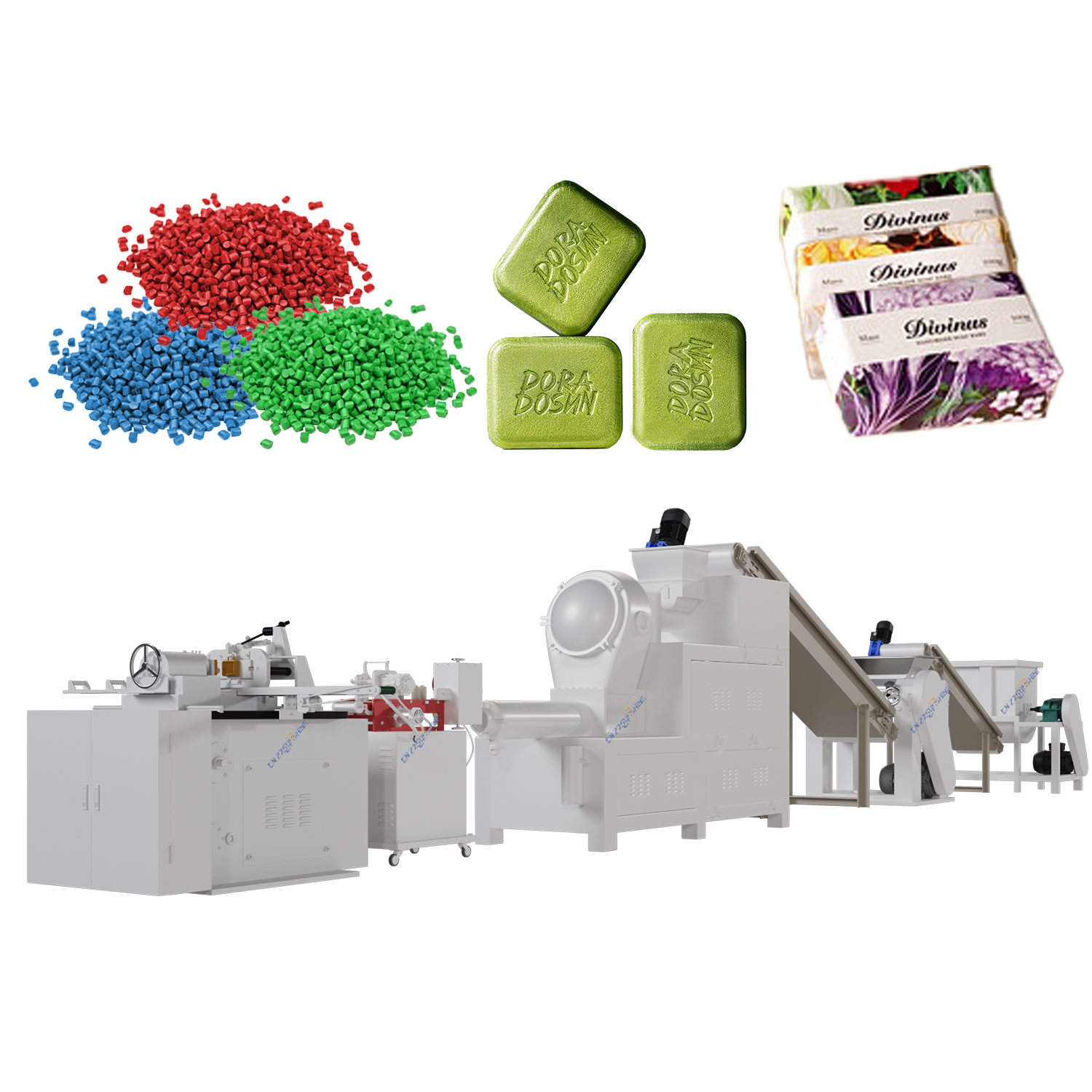Manufacturing high-volume, consistent laundry bar soap demands specialized, integrated equipment. A modern laundry bar soap production line seamlessly combines several critical machines to transform raw materials into finished bars ready for packaging. At the heart of this process is the **soap plodder machine for bar soap**, specifically a **vacuum plodder**. This unit is indispensable. It compacts the mixed soap base under vacuum conditions, meticulously removing trapped air. This deaeration is crucial; it prevents bubbles within the final bars, ensuring superior density, hardness, and longer-lasting performance – essential qualities consumers expect from laundry soap.
Preceding the plodder, the **soap mixer** (or **industrial mixer for chemical processing**) plays a vital role. This robust **mixing machine** thoroughly combines fats, oils, alkalis, additives, and recycled soap noodles into a homogeneous mass. Uniform mixing is foundational for consistent color, texture, and washing properties across every batch. Following extrusion from the vacuum plodder, the continuous soap log enters the cutting stage. Here, an **automatic soap production line** leverages precision **cutters**. While **electric washing soap cutters** are common, a **custom soap cutting machine** offers unparalleled flexibility for unique bar sizes, shapes, or embossing requirements demanded by specific brands.
The final stages involve refining the cut bars. A sophisticated **soap finishing line** or **toilet soap finishing line** (adapted for laundry bars) typically includes cooling tunnels, stamping units, and inspection conveyors. This ensures bars are correctly formed, cooled to optimal handling temperature, and any defective pieces are removed before packaging. Investing in a fully integrated **laundry soap making line**, incorporating high-performance components like the vacuum plodder and automated cutters, delivers significant advantages: maximized throughput, minimized labor costs, reduced waste, and guaranteed product uniformity. For large-scale manufacturers, optimizing each segment – from mixing and plodding to cutting and finishing – is key to dominating the competitive industrial detergent market.




